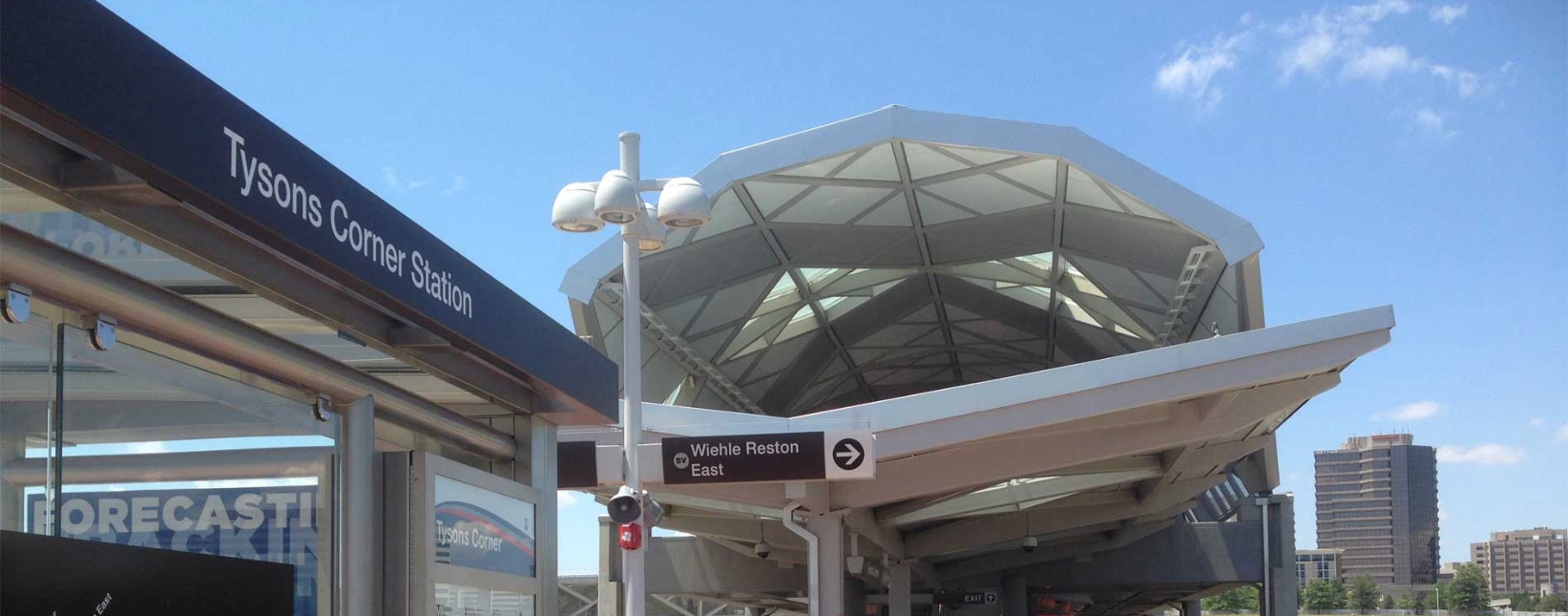Silver Line extension takes a large step forward with completion of rail yard at Dulles AirportBy Lori Aratani
Washington,
December 1, 2021
Contractors have finished work on the last major element of the multibillion Silver Line rail project, officials said Wednesday, a milestone in the decades-long effort to extend Metrorail service to Dulles International Airport and into Loudoun County. The rail yard was the last major hurdle for a project that has been plagued by delays. The announcement from the Metropolitan Washington Airports Authority (MWAA), which is overseeing construction of the rail line, clears the way for Metro to begin the evaluations needed before the Silver Line can begin carrying passengers. The announcement came less than a month after MWAA declared that work on the other major component of the Phase 2 extension, the 11.5-mile rail line, was substantially complete. “The completion of the rail yard and maintenance facility is critical to completing the Metrorail Silver Line to Dulles Airport and beyond,” John E. Potter, MWAA’s president and chief executive, said in a statement. “We are now one step closer to making that happen.” It will be up to Metro to determine when passenger service on the line will begin. Metro didn’t indicate Wednesday when passengers might be able to board at the six new stations, but earlier timelines laid out by the agency would indicate service could begin in the first half of 2022. “In the coming days and weeks, we will work closely with MWAA as we begin extensive testing to ensure the extension can be safely operated and all other parts of the project are accepted by our Board,” Metro said in a statement. “This process will determine when service can begin.” Rep. Gerald E. Connolly (D-Va.), who as chairman of the Fairfax County Board of Supervisors helped to lead the push to extend Metrorail service to Dulles Airport, said Wednesday’s announcement brings the region “another step closer to realizing that ambitious goal.” The extension will bring the rail system to fast-growing Loudoun County for the first time. County Supervisor Matthew F. Letourneau (R-Dulles), who also serves as a Virginia representative on Metro’s board, called the announcement an “important milestone.” “There’s still a little ways to go, but it’s good news,” he said. The rail yard and maintenance facility was built by Hensel Phelps on 90 acres of airport property along Old Ox Road and will provide storage for 184 rail cars. Officials at Hensel Phelps declined to comment Wednesday on MWAA’s announcement. A separate contractor, Capital Rail Constructors — a joint venture between Bethesda-based Clark Construction Group and Kiewit Infrastructure Group — was responsible for building the rail line. MWAA is overseeing construction of the project, which eventually will be handed to Metro. The transit agency will manage and operate the rail line. Metro previously estimated it could take five months of testing and other preparations before passenger service could begin. The Washington Metrorail Safety Commission, which is responsible for safety oversight of the rail system, also must verify that Metro has followed its safety certification process. The first phase of the Silver Line opened in July 2014 with five stations — four in Tysons and one in Reston. The second phase will have six stops — three in Fairfax County and three in Loudoun County — including the station at Dulles. The total cost of the first and second phases is estimated to be about $5.8 billion. Fairfax and Loudoun counties, as well as MWAA, the state of Virginia and the federal government, are helping to pay for the project, but most of the bill is being paid by Dulles Toll Road users. Much like the extension of the Silver Line, the project’s first phase, built by Bechtel, also was dogged by construction issues. It opened in July 2014, six months behind schedule and more than $220 million over budget. Construction on the second phase began that same year and officials had hoped it would be completed by mid-2018. Work on the rail yard was expected to be finished by December that year. But the second phase quickly ran into problems. MWAA’s decision to incorporate new requirements for storm water management delayed the rail portion of the project by 13 months and added at least $137 million to the cost. In all, delays have added more than $300 million to the project’s cost, which is expected to be covered by a $500 million contingency fund. Several deficiencies also were found at the rail yard, including cracks in concrete panels and platforms that had to be rebuilt because they were the wrong dimensions. To view this story as it appeared in the Washington Post, click here. |

In the News
SUBSCRIBE
SUBSCRIBE
Sign up to get news and updates from Rep. Gerry Connolly directly to your inbox.



